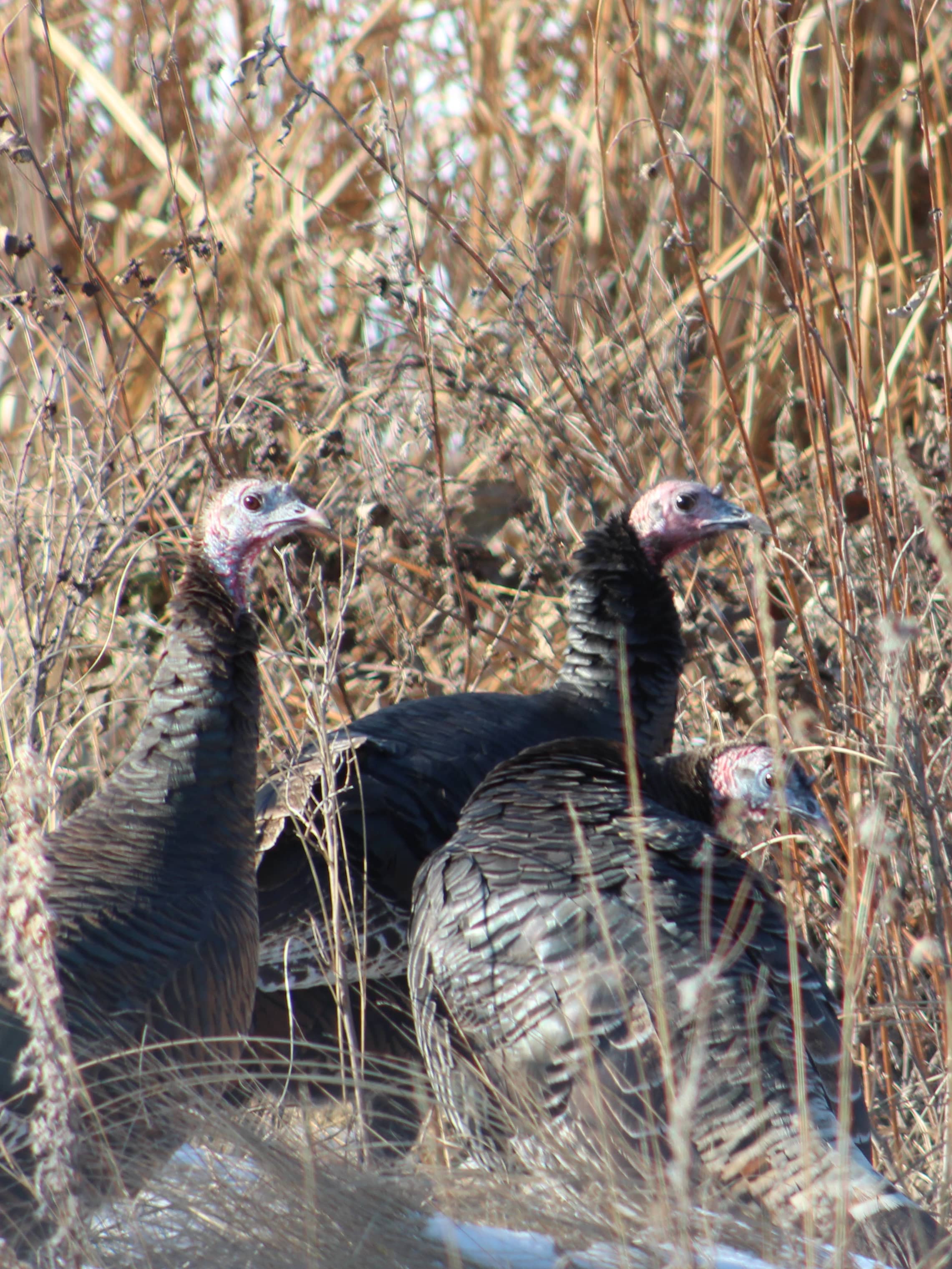
Good Looking Out. Three hen turkeys take cover in the grasses and cattails of a small creek near Judson, N.D. NWTF is working to improve riparian areas for more turkey habitat and added benefits of cleaner water and stronger banks and soils. Simonson Photo.
By Nick Simonson
As spring turkey hunting season kicks off across North Dakota, the National Wild Turkey Federation (NWTF) is looking through its Save the Habitat, Save the Hunt program to continue advancing its missions of improving habitat for the birds in the state, putting more hunters on the landscape and increasing their access to those huntable acres.
According to Clayton Lenk, NWTF District Biologist for North Dakota, along with Minnesota, Wisconsin and South Dakota, the organization is blowing its metrics out of the water in terms of benchmarks on all three fronts. Having already surpassed its goal of 13,750 acres of habitat preservation and improvement, he’s excited for what’s to come as work again gets underway this summer.
Keyed In On Habitat
“We’ve actually exceeded those goals of 13,750, as of September of 2020, we were at 20,284, so we’ve exceeded that goal by almost 7,000 acres already, and we still have two years left of this initiative,” Lenk relates, adding that leveraging partnerships has helped NWTF get habitat in the ground, “we work with a lot of agencies, the forest service, North Dakota Game & Fish; we work with a lot of non-government organizations as well on different things,” to maximize grants and best utilize dollars raised by the group, he concludes.
At the forefront of its programs aligned with private landowners is the NWTF Northern Plains Riparian Restoration Initiative (NPRRI) which works with producers and ranchers to protect waterways such as river bottoms and creek draws that contain the ideal habitat necessary to maintain turkey populations in the Peace Garden State. Through best management practices of creating grazing plans, rotational grazing, and fence installation to keep livestock out of creeks and other waterways to prevent siltation, the organization works to create new habitat in these key areas, which in turn improves soil sturdiness and water quality as well.
Since its start in 2007, the NPRRI has helped stabilize countless miles of stream and riverbanks and allowed for the retention and establishment of quality tree and grassland habitat along those flows utilized by turkeys and other wildlife.
Another Kind of Retention
Through strong internal programs, including the Juniors Acquiring Knowledge Ethics and Sportsmanship (or JAKES) courses, NWTF has recruited hundreds of new hunters over the past three years. This has led NWTF to recruit more than the benchmark it set at the outset of the group’s new initiative and made its members hopeful – as more and more people have been turning to the outdoors – that the trend will continue and those who have been introduced to the opportunities will remain part of the fold.
Through mentored hunt events, JAKES programming and other activities, NWTF hopes to keep new hunters coming in, and building skills in those they’ve helped teach about turkeys and turkey hunting to pass along their experiences as mentors in the coming seasons.
“The events that we hold are made to maintain and build peoples’ personal skills so that they can further go out on their own and maybe mentor somebody they know, and hopefully keep expanding that,” Lenk comments.
Opening Up
The third prong of the organization’s efforts involves providing places for those new hunters to go, and through its connections with other groups and direct donations to access programs in North Dakota, NWTF has exceeded its expectations, even with the wrinkle of the recent pandemic in the mix.
“Luckily we have NWTF chapters throughout the state and through their fundraising events and banquets were able to compile some money and we donate $10,000 every year to North Dakota Game & Fish,” Lenk relates as to fundraising for local efforts, adding “in conjunction with helping with land acquisitions and things like that we’ve actually been able to 24,848 acres as of September of last year.”
More information on NWTF and the organization’s programs, including NPRRI can be found at nwtf.org.
